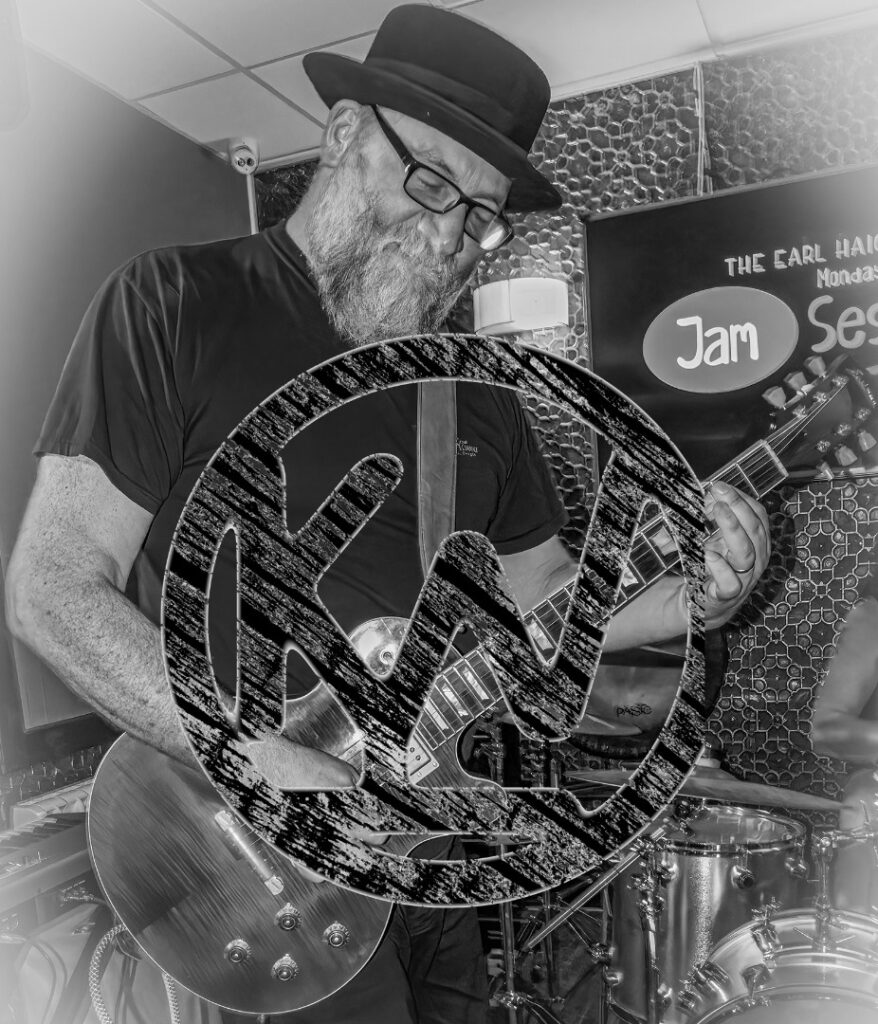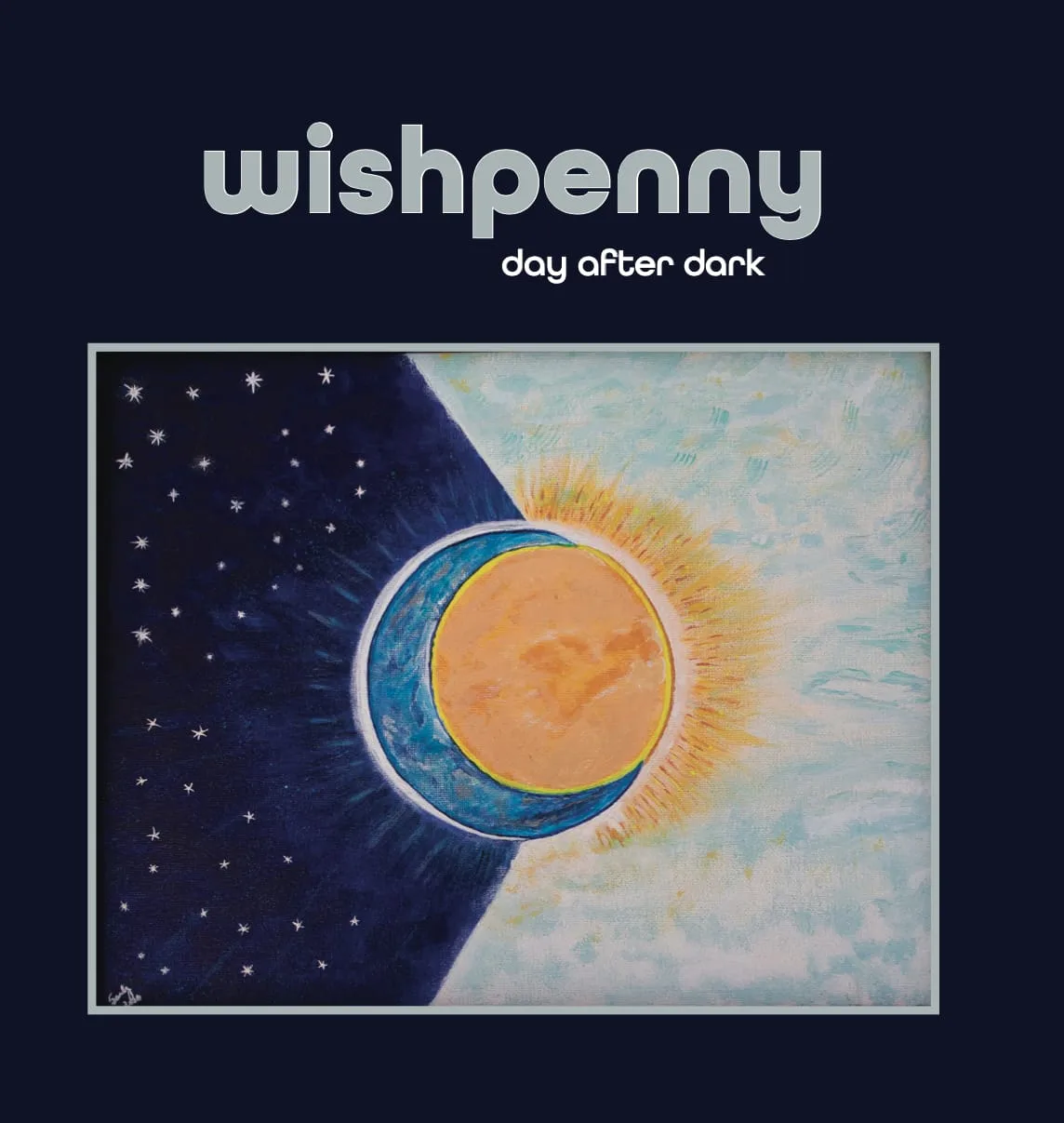Ken Woods Photo Credit: Barry Morris
From the heart of Penarth, Wales, emerges a band that doesn’t just play music, they resurrect stories. Ken Woods and The Old Blue Gang are a searing, roots-driven collective whose artistry is anchored in a deep reverence for musical tradition and a fearless commitment to unearthing America’s untold past. At the helm is Ken Woods, a musical visionary whose mission is both creative and corrective: to reframe the narratives embedded in American roots music and reclaim symbols historically tied to violence, injustice, and exclusion. The name Old Blue Gang is more than just a band moniker, it’s a statement. Originally associated with the violent gang responsible for the Hells Canyon Massacre, Woods deliberately chose to subvert its meaning, flipping it from a badge of racism into a vessel of reclamation.
In doing so, he draws attention to the power of names, symbols, and stories, and challenges who gets to own them. For Ken, it’s about refusing to let entire musical traditions or cultural aesthetics be monopolized by harmful ideologies. Instead, he infuses them with new purpose, new stories, and new energy. Musically, the group is an electrifying hybrid: a stew of Bakersfield-style country, psychobilly, roots rock, blues, folk, and western grit, echoing the sonic palettes of icons like Jimi Hendrix, ZZ Top, The Allman Brothers Band, Mountain, and Neil Young and Crazy Horse. But this isn’t mere homage, the Old Blue Gang channels those influences into a raw, improvisational sound that is both feral and purposeful. It’s a jam band that tells stories, a protest vehicle on a rhythm-fueled mission.
Their forthcoming album, Silent Spike, set for release on July 4, 2025, is a concept record of ambitious scale and emotional depth. It charts the story of the Railroad Chinese the laborers whose hands built the foundations of America’s westward expansion, only to be met with exclusion, violence, and erasure. The album covers a sweeping historical timeline, from ocean crossings and railway construction to brutal expulsions and quiet homecomings, all told through the band’s unflinching sound. Ride the Rails, the debut single from Ken Woods and The Old Blue Gang, is a scorching, visceral entry point into the sound and soul of the forthcoming concept album Silent Spike.

Released on March 31, 2025. the track, Ride The Rails barrels down with an unstoppable force, dragging behind it a freight car of history that many would rather forget. Set against the backdrop of the 1893 expulsion of the Chinese community in La Grande, Oregon, the song captures the chaos, injustice, and sorrow of that moment with stunning musical and emotional clarity. From its relentless train-beat rhythm to its explosive guitar solos, Ride the Rails is more than a song, it is a sonic reenactment of resistance and remembrance. In just one track, Ken Woods and his band announce their arrival not as entertainers, but as archivists of emotion and historians of sound. With Ride the Rails, they don’t just make music. they make memory loud.
From the very first beat of Ride the Rails, Ken Woods and The Old Blue Gang pull listeners into a relentless locomotive of sound that refuses to decelerate. The track opens with a driving rhythm that immediately evokes the hypnotic, mechanical throb of a train in motion, a brilliant sonic metaphor for the historical journey it narrates. There’s a rawness in the intro, an electric, pulsing energy, that feels like the hiss of steam and the grind of steel on track. This isn’t just a song that begins; it erupts. And right from that moment, I knew I was in for a ride through time and soul, both musically and emotionally. There’s a powerful undertow of anticipation in how the guitars growl and snarl, signaling that something profound is coming.
Musically, Ride the Rails is a compelling cocktail of Bakersfield twang, roots rock grit, and a touch of psychobilly darkness. There’s an intensity in the rhythm section that keeps the track constantly charging forward, mimicking the momentum of a runaway train. Yet within this ferocity, Woods and his band exhibit a refined control. The shifts between the verses and choruses are seamless, transitions built not just through tempo or chord changes, but through sonic tension and emotional escalation. The instrumentation is layered with purpose: jagged electric guitars slash through the air, while the upright bass and drums lock into a groove so tight, it feels like the heartbeat of history itself. And when those fiery guitar solos hit, full of distortion and pent-up rage, they don’t just shine musically; they scream as echoes of injustice.
Vocally, Ken Woods delivers a performance brimming with grit, intention, and narrative weight. His vocal tone is earthy and weathered, almost like the voice of an elder recounting a painful chapter of history that was nearly lost to time. Each lyric is delivered with precision and urgency, allowing the full gravity of the story to sink in. Singing about the 1893 expulsion of Chinese residents from La Grande, Oregon, Woods takes on the role of a storyteller-activist, giving voice to those erased from mainstream history. His cadence never falters; instead, it marches like a protest down forgotten tracks, with every word laced in a determination to remember and honor. There’s a sense of embodied rage in his delivery, never explosive, but always smoldering, matching the emotional heat of the subject matter with dignified resolve. You can hear the smoke in his breath, the weight of injustice in every line.

What’s especially moving about Ride the Rails is the extraordinary interplay between the vocals and instrumentation. The band isn’t merely accompanying Woods, they are echoing, shadowing, and underlining his every phrase. The music itself acts as a second narrator, conjuring emotional and environmental backdrops: at times you can practically hear the train whistle’s cry in the guitar bends, feel the stampede of boots in the thunderous toms, and sense the weight of collective fear and resistance in the rumble of the bass. This interplay crafts an immersive soundscape, where voice and instrument are inseparably fused to portray not just the events of 1893, but the psychological state of those living through them. The instrumentation breathes life into the lyrics, turning each phrase into a visceral experience. The arrangement never feels cluttered, every note and rhythm feels curated to evoke place, time, and mood, painting a sonic mural of historical trauma and communal endurance.
From the moment the track kicked off, it cast a deep spell over me, one of cinematic tension and emotional gravity. The vibe throughout the song feels dark, restless, and persistently haunted, like the kind of memory that won’t stop knocking on your door. There’s something in the pacing that evokes both the chaos of exile and the permanence of historical scars. And yet, amidst this storm, the song never loses its musical elegance. It carries itself with grace, much like the oppressed people whose story it tells. Listening to it was not passive, it was active engagement. My emotions shifted from empathy to indignation, from admiration of the band’s technical execution to reflection on the song’s cultural importance. The atmosphere crafted here isn’t just dramatic, it’s necessary. It invites you to witness, to feel, to confront.

The production quality of Ride the Rails is another standout feature. Recorded at Fieldgate Studios in Penarth, Wales, and produced by Grammy-winner Andrew Smillie, the track boasts a clear, three-dimensional mix that enhances rather than polishes away the track’s raw energy. Each element, from the serrated guitars to the throbbing rhythm section, has its distinct space in the mix, while still remaining glued together by a cohesive sonic glue. Nothing feels overproduced or sterile. Instead, the audio engineering serves the narrative, creating a bold, unvarnished canvas where emotional truth can breathe. The production doesn’t dilute the urgency; it intensifies it. The studio’s work makes the performance sound as if it were happening in real time, urgent, alive, and echoing across history.
In all, Ride the Rails is more than a song, it is a living monument carved into six minutes of unapologetic roots rock. Ken Woods and The Old Blue Gang have crafted a masterwork that does what the finest protest songs do: it remembers, it rages, it reveals. Through blistering instrumentation, powerful vocal delivery, and exquisite production, the band delivers a stunning tribute to the forgotten and a reminder to the present. As an artistic statement, it is unflinching and unforgettable. As a piece of music, it is thunderous, precise, and emotionally loaded. And as a historical commentary, it is a siren of remembrance, one that urges us never to let the rail tracks of injustice fade into silence.
For more information about Ken Woods and The Old Blue Gang, click on the icons below.

![Pankow_77c – Suspiria Neural Decay [V 2.07]](https://rockermag.com/wp-content/uploads/2025/09/3a8295d6-b2a7-498f-b021-33c9fe234801-e1759050270587.jpeg)


One thought on “Ken Woods and The Old Blue Gang Ignite the Past with Ride the Rails: A Sonic Reckoning of Resistance and Remembrance”